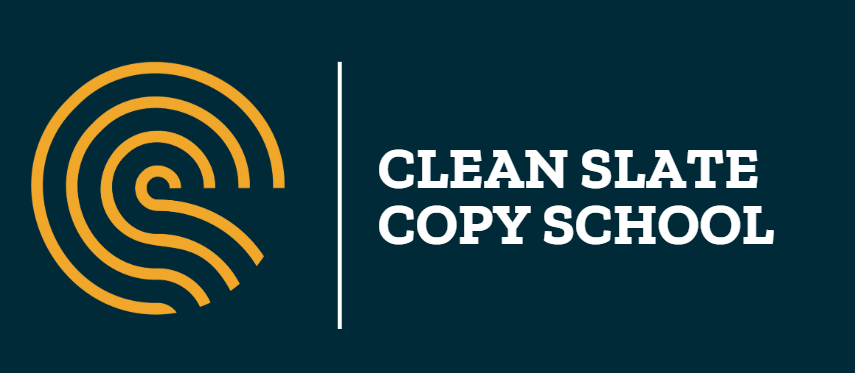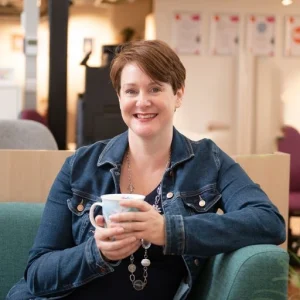Do you feel daunted by creative tasks?
As adults, we seem a bit intimidated by the concept. We think we have to be born with a special creativity gene, or need decades of experience to master it.
But creativity isn’t an exclusive talent reserved for a select few. We all have creativity within us. And I’m here to bust this myth – because it’s a practice anyone can develop.
All you need is the confidence to experiment and some processes that get you where you need to go.
Everyone has the power to develop creative skills
Think back to your childhood when you created freely, without self-criticism. You made some truly glorious things with empty loo rolls and PVA glue. You wrote fantastical stories and adventures. You had no qualms about splodging wonderful, clashing colours on that easel – and if you told your teacher it represented your family members, it was never questioned.
Because creativity is not an exclusive club – it’s inside all of us. Even if you don’t see yourself as a creative person, you can develop it, the same as any skill. Just like a muscle – the more you exercise your creativity, the stronger and more confident you’ll be.
Practical strategies for fresh ideas
Imagine you’ve been asked to make your company’s emails more creative to improve engagement. You look online for a template, then follow a well-known copy guru’s process, but the results are still disappointing – it lacks originality and doesn’t deliver the desired open rates.
So how can you achieve the outcome you really want? You need to develop your own creative processes for each separate element – tried-and-tested methods that take you through inspiration, iteration and play – crafting and refining the language until you generate options that work.
Once you’ve found a system that works for you, you’ll be able to confidently and repeatedly generate more creative copy – including curiosity-provoking subject lines, body content that keeps the reader hooked, and calls-to-action that compel clicks.
Now you have a toolkit you can apply to any creative task, that always gets you to your desired end result.
Is this how everybody does it? No. The creative process looks different for everyone.
Can it work for you? Absolutely.
7 essential techniques for your creative toolkit
1. Give yourself a framework
Let’s consider poetry. Free verse, with no structure, is probably the most difficult way to write a poem. Because what do you write when you could write anything? The choices are too overwhelming. However, if you give yourself a set of rules, in a form such as a limerick, it becomes much easier. Now you have a way in.
We can apply the same principle to copywriting. You can create your own framework by clearly defining your purpose, audience, form, style, tone, length, format and desired outcomes beforehand. Write yourself a brief and a plan as the first step of the process. It will focus your mind and ideas will begin to percolate. It’s like draping fabric across a dressmaker’s dummy – once you give the material a form and shape you can channel your thoughts. It gives you a concrete way forward.
2. Change your perspective
Role play, personification, games and storyboarding can help you see things in new ways. Think of a product as a character, perhaps draw your ICA as the hero of a cartoon strip. Even something as simple as quickfire word association forces your brain to unlock new thoughts. Or try changing your location – a shift in perspective can often lead to breakthrough ideas.
3. Get weird
Push the boundaries of your imagination. Coming up with wild extremes in an environment free from criticism, is a tried-and-tested way to explore new concepts, which you can then refine. You just need a bit of confidence to give it a go, and a team who understands it’s a means to an end. This process can lead to fresh, surprising concepts that really innovate.
4. Use different media
Break away from your usual medium. Draw, sing, make collages, use post-its and coloured felt-tips on really huge pieces of paper. You’ve probably seen the recent rise of Lego creative play in the workplace – it’s a brilliant 3D medium for exploration. A mixture of media means you’re engaging different neural pathways in your brain, sparking new approaches.
5. Embrace the rubbish
Just write. Like running an old bath tap with ancient plumbing – the water will come out brown before it runs clear. Don’t be disheartened if your first drafts are terrible – it’s a good and necessary thing. In the same way you let the tap run, uncritically allow yourself to write through the initial rubbish.
In The Artist’s Way, Julia Cameron recommends the practice of morning pages to clear your mental clutter and make way for genuine creativity. It’s a process – as we write, we think, we explore, we experiment and we play. So if you keep writing, your ideas will improve and develop, until you produce what you need.
6. Get inspired by other works
Use existing works as a springboard for your own unique creations. This isn’t about plagiarising but about drawing inspiration. You could start with a well-known phrase or concept and give it your own twist – look at how Aldi creates its parody products.
Many successful musicians use this approach, sampling other artists’ works or playing with motifs until they become brand new tracks. You could even start with someone else’s tagline and change it one word at a time until it becomes completely new.
Just bear in mind the rules of copyright, give credit where it’s due and respect the work of others to maintain both legal and ethical boundaries.
7. Find inspiration in creative works
Your creative muscles need fuel in order to grow. So feed it with books, articles, poetry, film, music, art and just getting out and living life!
Step away from the page or screen – cook, play instruments, be in nature, exercise or and socialise. These experiences will enrich your creative palette and the quality of your work, even subconsciously.
Embrace your creative journey
Just remember, creativity isn’t a secret club reserved for the gifted few, nor is it about waiting for a sudden burst of inspiration – it’s a skill you can cultivate.
So next time you’re faced with a creative task, try to tap into the fearlessness of childhood and give yourself a structure to work with.
Over time, as you develop your processes and practices, you’ll discover new ways to approach tasks, not only enhancing your creative skills but also finding greater confidence in your work.
Article first posted on LinkedIn 24/7/2024
Come and learn with us
- Assess your writing skills across the 3 pillars of control, creativity and context with the Copy Catalyst Compass
- Explore our free and paid resources
- Join the next cohort of Copy Catalyst, our 12-week signature writing skills course for marketers

